- Home
- Michael Chabon
Manhood for Amateurs Page 6
Manhood for Amateurs Read online
Page 6
Through some alchemy of the mother’s artistic nature, the openness of the household, the unfettered nature of American childhood during that time and the sheer mass of children in the house, there was always something afoot at the Megginsons’. When you walked in the door, you would get drafted into whatever large ongoing collective enterprise was under way—making that year’s Halloween costumes, re-creating in card stock and glue a shot of Camelot from a panel in Prince Valiant, writing a rock opera, helping to cope through pie, sauce, and butter with a rapidly spoiling surfeit of apples gathered at Sewell’s Orchard. Usually, some book, TV show, or record album was passionately in vogue around the house, with all play activity—drawing sessions, outdoor adventuring, dinner-table confabulation—focused narrowly around Norse Gods and Giants or Space: 1999 or Queen II. And like one of the progressive rock bands then in their heyday, the Megginsons were busy, all the time, not only with those big double-sided concept albums but with all manner of side projects and solo albums and one-shots: Caroline was learning to read Tarot cards; Peter had found a way to make cool-looking spaceships out of the cap from a Bic pen and the plastic clip from a bread bag snapped in two; Andrew was immersed in the epistemology of Tintin; Jane could not stop talking about Ginnungagap.
On this one Saturday morning, the Megginsons were all about Planet of the Apes. Not the movie nor any of its five increasingly baroque sequels, and certainly not the Pierre Boulle novel, confusingly replete with witty Frenchmen. No, the Megginsons and I were obsessed with the short-lived CBS television series, of which thirteen episodes aired, to low ratings, at the end of 1974.
As with many forgotten TV series, all the episodes of Planet of the Apes are now available on DVD, but I haven’t ever gone back to look at them. What I remember about the show, albeit vaguely, are the elements that formed the basis of our play: the setting amid a world of forests and grassy hills; the peculiarity that, unlike in the films, the humans, though degraded in ape eyes, were capable of speech; and above all, perhaps, the steady presence in every episode of adventure on horseback.
For a day we inhabited our Planet of the Apes: a hill, a stream, a small wooden bridge behind the Megginsons’ disorderly and productive town house at the ragged edge of Columbia, where built land gave way to open space. According to principles implied but never articulated by the TV show, we named and fitted ourselves with weapons and histories. I can’t quite remember who was a sensitive chimpanzee, who a questing astronaut, who a noble savage, who a brutal and potent gorilla warlord, but I know that nobody wanted to be one of the characters from the show. It was always part of the game to make up your own character. Maybe we all wanted to be astronauts and left the marauding and enslaving gorillas to be played by the heavies of our imaginations. I am sure that at least as much time was spent in preparing to play, in conferring and arguing and revising the parameters of the game, as in actually playing it. Eventually, night fell; it was time to come inside, time for me to return to my own neater, more secure, vastly emptier house.
And now I have four children of my own, two girls and two boys. There is a lot going on in my house, and sometimes it seems to echo or reflect the fertile chaos in the Megginsons’. But somehow it is not quite the same. I’m not sure what the reason for that is. We don’t let things get as messy around here. My kids have a lot more homework than I ever did. But there’s something lacking in their lives, and I see it in their relation to the variety of crap that now dominates the mass-art landscape, a variety well represented by neurotic-farting-penguin movies.
There’s no doubt that the Planet of the Apes TV show was crap. Yes, the makeup was decent for its time, and the shows tried, in the dutiful manner of early seventies post–Star Trek, pre–Star Wars television science fiction, to address weighty issues of prejudice, intolerance, and the meaning of being human. But it remained—indeed its existence depended on it being—a knockoff of a knockoff, the sequel to sequels, worked up by veteran TV hacks to fill up the spaces between Parkay margarine ads. What’s more, it was crap that flopped, canceled after only three months.
But it had—crucially, to my theory of what makes great mass art—the powerful quality of being open-ended, vague at its borders. Onto its simple template of horses and apes and humans, of quest and pursuit across a simplified landscape, a kid could easily project himself and the world he lived in. In its very incompleteness, born of lack of budget, the loose picaresque structure, and even of cancellation itself, it hinted at things beyond its own borders. There was room for you and your imagination in the narrative map of the show.
The CGI animated movies that dominate in the theaters today don’t work that way. With their fixed sets of characters, each giraffe or squirrel resembling in its carefully designed variation not a recognizable person or type so much as a brand identity, these films operate more like classic sitcoms than like the parodic-adventure stories for which they try to pass. The contours of the worlds they depict feel as backless as painted scenery flats, as the walls and doors of Mary Richards’s newsroom or the Huxtable living room. I like a good sitcom as much as anybody, but did any kids ever try to get up a game of Murphy Brown? At the same time, the ample budgets, large crews, and generally high level of technical prowess boasted by even the most execrable of these films enable their creators to employ the prevailing Star Wars—inspired aesthetic of packing every scene, every frame, with incident and filigree, without the concomitant open-ended structure that made the early Star Wars films, at least, a likely locus of fantasy play both for children and, in the form of fan fiction, adults. The new studio-made CGI products are like unctuous butlers of the imagination, ready to serve every need or desire as it arises; they don’t leave anything implied, unstated, incomplete. There is no room in them for children. And so they never form the basis for my own kids’ games.
As a father raised on a hearty diet of crap, I wrestle all the time with the role of crap in my own kids’ lives. There is so damn much of it now—crap TV shows, crap movies, crap toys and crap trading cards, crap video games, crap Flash animations and crap macaroni and cheese with SpongeBob-shaped pasta nodules, all of it interlocked and cross-referenced with breathtaking care and thoroughness. But I wouldn’t worry about it so much, I guess, if I felt like my kids had the space in their own heads and, especially, in their own physical worlds to lay it all out and make it their own.
Sometimes they don’t seem able to operate in an imaginative world. When we go to Maine in the summer my wife and I open the back door and step aside and wait for them to fly out into the grass and the sunshine. Acres of woods and wildflowers, butterflies and streams, a tame waterfall. A waterfall and hours of freedom from rules and parental control. And they stand there on the doorstep, eyeing one another, shuffling from foot to foot.
In The Omnivore’s Dilemma Michael Pollan describes the disillusioning reality of the life of chickens sold as “free-range.” He explains that these birds are raised, like all commercially farmed chicken, in the dense confinement of industrial henhouses for the first six weeks of their lives. At the end of that period, not long before the chickens are to be slaughtered, the doors of the henhouse are rolled open, giving onto a regulation patch of open range. The chickens come to the door and look out at the world of green grass and grubworms and fresh air they are being offered. And then they go back to the cramped, safe remainder of their lives, with their needs and desires attended to as assiduously as by any butler or animation studio. They are afraid to go outside; it’s not a world they know or know how to explore. The farmers don’t really want them to go out and explore it; there are too many diseases they might catch, unprotected by antibiotics as they are.
My kids are free-range children, in all the stark reality of the term except the part about being eaten. If, like the four Pevensie children (two boys and two girls) of The Lion, the Witch and the Wardrobe, they were sent off to the countryside to avoid the Blitz, my children might well have to be marched, under protest, to the room with t
he old wardrobe and shoved in among the coats; it would be hard for them to grasp how an entire old house, filled with unknown rooms and corridors, might become a world of unlimited play. They might never be able to engage in the half-bored, half-enchanted wandering through the variable, never-changing spectacle of the neighborhood that enables the children (three boys and a girl) in Edward Eager’s Half Magic to find the talisman that grants half of every wish, so that one must learn, invaluably, to wish twice as hard.
That may be why I spend as much time worrying about the crap in my kids’ imaginative diet as I do fretting over their eating habits. Free space, free play, and the sense of independent control over a world that is vague and discoverable at its edges: These act as a kind of filtration system enabling kids not to work the crap out of their minds—I proclaim for all time the splendor and goodness of crap entertainment—but to compound it with the alloy of their own imagination, tempering it against the hard edges and rough spots of the physical world. All great crap is open-ended but only if it can be carried by a child right out into the open. Otherwise, kids get trapped within the flats of the vivid and convincing set that we have constructed for them, afraid to go through doors that lead nowhere, staring through a CGI window at a pastel-and-pixel view of a world they fear or have forgotten how to reach.
[ IV ]
I didn’t play golf, and he had never smoked marijuana. I was a nail chewer, inclined to brood, and dubious of the motives of other people. He was big and placid, uniformly kind to strangers and friends, and never went anywhere without whistling a little song. I minored in philosophy. He fell asleep watching television. He fell asleep in movie theaters, too, and occasionally, I suspected, while driving. He had been in the navy during World War II, which taught him, he said, to sleep whenever he could. I, still troubled no doubt by perplexing questions of ontology and epistemology raised during my brief flirtation with logical positivism ten years earlier, was an insomniac. I was also a Jew, of a sort; he was, when required, an Episcopalian.
He was not a big man, but his voice boomed, and his hands were meaty, and in repose there was something august about his heavy midwestern features: pale blue eyes that, in the absence of hopefulness, might have looked severe; prominent, straight nose and heavy jowls that, in the absence of mirth, might have seemed imperious and disapproving. Mirth and hopefulness, however, were never absent from his face. Some people, one imagines, may be naturally dauntless and buoyant of heart, but with him, good spirits always seemed, far more admirably, to be the product of a strict program of self-improvement in his youth—he believed, like most truly modest men, in the absolute virtue of self-improvement—which had wrought deep, essential changes in a nature inclined by birth to the darker view and gloominess that cropped up elsewhere in the family tree. He didn’t seem to be happy out of some secret knowledge of the essential goodness of the world, or from having fought his way through grief and adversity to a hard-won sense of his place in it; they were simple qualities, his good humor and his optimism, unexamined, automatic, stubborn. I never failed to take comfort in his presence.
The meaning of divorce will elude us as long as we are blind to the meaning of marriage, as I think at the start we must all be. Marriage seems—at least it seemed to an absurdly young man in the summer of 1987, standing on the sun-drenched patio of an elegant house on Lake Washington—to be an activity, like chess or tennis or a rumba contest, that we embark upon in tandem while everyone who loves us stands around and hopes for the best. We have no inkling of the fervor of their hope, nor of the ways in which our marriage, that collective endeavor, will be constructed from and burdened with their love.
When I look back—always an unreliable procedure, I know—it seems to have been a case of love at first sight. I met him, his wife, and their yellow beach house all on the same day. It was a square-pillared bungalow, clapboard and shake, the color of yellow gingham, with a steep pitched roof and a porch that looked out over a frigid but tranquil bay of brackish water. His wife, like him in the last years of a vigorous middle age, had been coming to this stretch of beach since early in her girlhood, and for both her and her daughter, whom I was shortly to marry, it was more heavily and richly layered with memories, associations, artifacts, and stories than any place any member of my own family had lived since we had left Europe seventy years before. Everything about this family was like that. My future mother-in-law lived in the house in Seattle where she had been born. My father-in-law had grown up down the road in Portland. They had met at the University of Washington. Everyone they knew, they had known for longer than I’d been alive. All the restaurants they favored had been in business for years, they were charter members of their country club, and in some cases they did business with the sons of tradesmen they had dealt with in the early days of their marriage. A journey through the drawers, closets, and cabinets of their house in town yielded a virtual commercial and social history of Seattle, in the form of old matchboxes, rulers, pens, memo pads, napkins, shot glasses, candy tins, golf tees, coat hangers; years and years’ worth of lagniappes, giveaways, souvenirs, and mementos bearing the names, in typefaces of four decades, of plumbing supply companies, fuel oil dealers, newlyweds, dry cleaners, men and women celebrating birthdays and anniversaries.
God, it was a seductive thing to a deracinated, assimilated, uncertain, wandering young Jew whose own parents had not been married for years and no longer lived anywhere near the house in Maryland where, for want of a truer candidate, he had more or less grown up. They were in many ways classic WASPs, to be sure, golfing, khaki-wearing, gin-drinking WASPs. The appeal of such people and their kind of world to a young man such as I was has been well-documented in film and literature; perhaps enough to seem by now a bit outdated. But it wasn’t, finally, a matter of class or style, though they had both. I fell in love with their rootedness, with the visible and palpable continuity of their history as a family in Seattle, with their ability to bring a box of photographs taken thirty summers earlier and show me the room I was sitting in before it was painted white, the madrone trees that screened the porch before two fell over, the woman I was going to marry digging for geoduck clams on the beach where she had just lain sunbathing.
Of course, they were more than a kind of attractive gift wrap for their photographs, houses, and the historical contents of their drawers. They were ordinary, problematical people, my in-laws, forty years into a complicated marriage, and over the course of my own brief marriage to their daughter, I came to love and appreciate them both as individuals, on their merits and, as my marriage began so quickly to sour, for the endurance of their partnership. They had that blind, towering doggedness of the World War II generation. I suppose it’s possible that with two daughters, they’d always wanted a son, my father-in-law especially; I do know for certain that I have never been one to refuse the opportunity to add another father to my collection.
He offered himself completely, without reservation, though in his own particular, not to say limited, way (it is this inherent limited quality of fathers and their love that motivates collectors like me to try to amass a complete set). He took me down to Nordstrom, the original store in downtown Seattle, and introduced me to the man who sold him his suits. I bought myself a few good square-cut, sober-colored numbers in a style that would not have drawn a second glance on Yesler Way in 1954. He introduced me to the woman from whom he bought jewelry for his wife, to the man who took care of his car, to all of the golf buddies and cronies whose sons he had been admiring from afar for the last thirty years. He was a bit barrel-chested anyway, but whenever we went anywhere together and, as was all but inevitable, ran into someone he knew, his breast, introducing me, seemed to grow an inch broader, the hand on my shoulder would administer a little fight-trainer massage, and I would feel him—as first the wedding and, later, the putative grandchildren drew nearer—placing, for that moment, all his hopes in me. He took me to football games, basketball games, baseball games. He let me drive his Cadillac; natu
rally, he never drove anything else. Most of all, however—most important to both of us—he let me hang out in his den.
As the child of divorced parents, myself divorced, and a writer trained by five hundred years of European and American literary history always to search out the worm in the bud, I have, of necessity, become a close observer of other people’s marriages. I have noticed that in nearly all the longest-lived ones, if there is space enough in the house, each partner will have a room to flee to. If, however, there is only one room to spare, it will always be the husband’s. My in-laws had plenty of room, but while she had her office just off the bedroom (where I would sometimes see her sitting at a Chinese desk, writing a letter or searching for an article clipped from Town & Country about flavoring ice creams with edible flowers), my mother-in-law’s appeared to serve a largely ceremonial function.
My father-in-law, on the other hand, sometimes seemed to live down in the basement. His office, like him, was mostly about golf. The carpet was Bermuda-grass green, the walls were hung with maps of St. Andrews and framed New Yorker covers of duffers, and the various hats, ashtrays, hassocks, cigarette lighters, plaques, novelty telephones, and trophies around the room were shaped like golf balls, tees, mashies, mulligans, and I don’t know what. In the midst of all this sat an enormous black Robber Baron desk with matching black Captain Nemo chair; an old, vaguely Japanese-looking coffee table on its last tour of duty in the house; a cyclopean television; and a reclining armchair and sofa, both covered in wool patterned with the tartan of some unknown but no doubt staunch, whiskey-drinking, golf-wild highland clan.

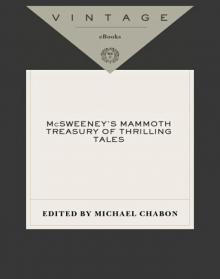 McSweeney's Mammoth Treasury of Thrilling Tales
McSweeney's Mammoth Treasury of Thrilling Tales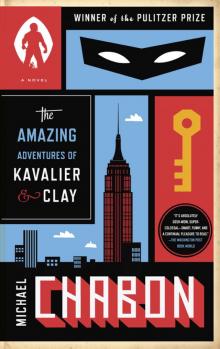 The Amazing Adventures of Kavalier & Clay
The Amazing Adventures of Kavalier & Clay The Yiddish Policemen's Union
The Yiddish Policemen's Union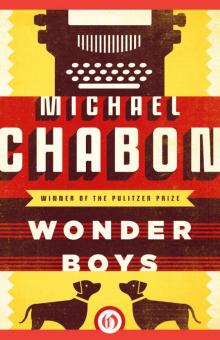 Wonder Boys
Wonder Boys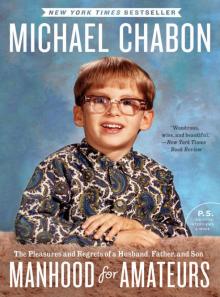 Manhood for Amateurs
Manhood for Amateurs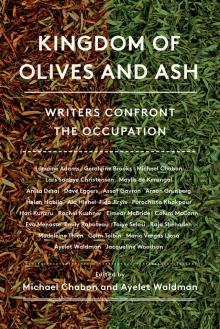 Kingdom of Olives and Ash: Writers Confront the Occupation
Kingdom of Olives and Ash: Writers Confront the Occupation Gentlemen of the Road: A Tale of Adventure
Gentlemen of the Road: A Tale of Adventure A Model World and Other Stories
A Model World and Other Stories Pops: Fatherhood in Pieces
Pops: Fatherhood in Pieces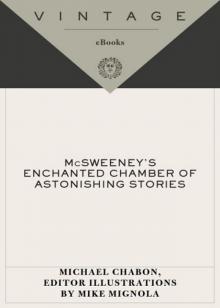 McSweeney's Enchanted Chamber of Astonishing Stories
McSweeney's Enchanted Chamber of Astonishing Stories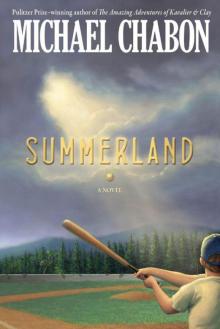 Summerland
Summerland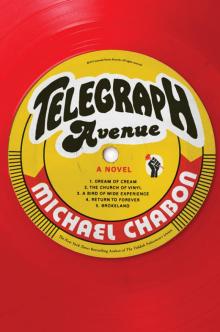 Telegraph Avenue
Telegraph Avenue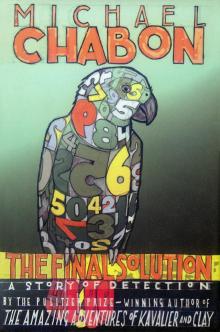 The Final Solution
The Final Solution The Mysteries of Pittsburgh
The Mysteries of Pittsburgh Werewolves in Their Youth
Werewolves in Their Youth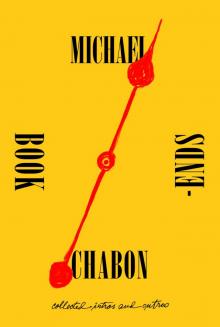 Bookends
Bookends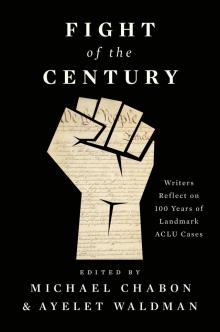 Fight of the Century
Fight of the Century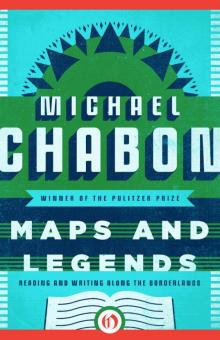 Maps and Legends
Maps and Legends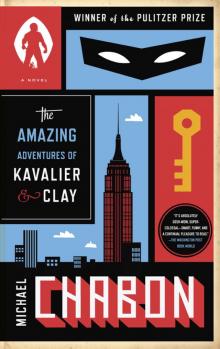 The Amazing Adventures of Kavalier & Clay (with bonus content)
The Amazing Adventures of Kavalier & Clay (with bonus content)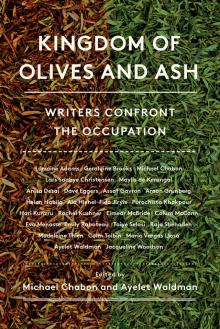 Kingdom of Olives and Ash
Kingdom of Olives and Ash Pops
Pops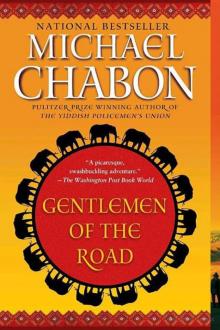 Gentlemen of the Road
Gentlemen of the Road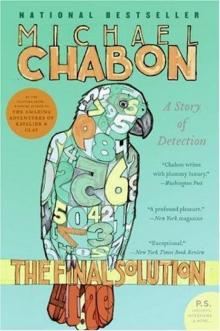 The Final Solution: A Story of Detection
The Final Solution: A Story of Detection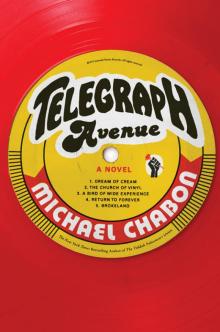 Telegraph Avenue: A Novel
Telegraph Avenue: A Novel